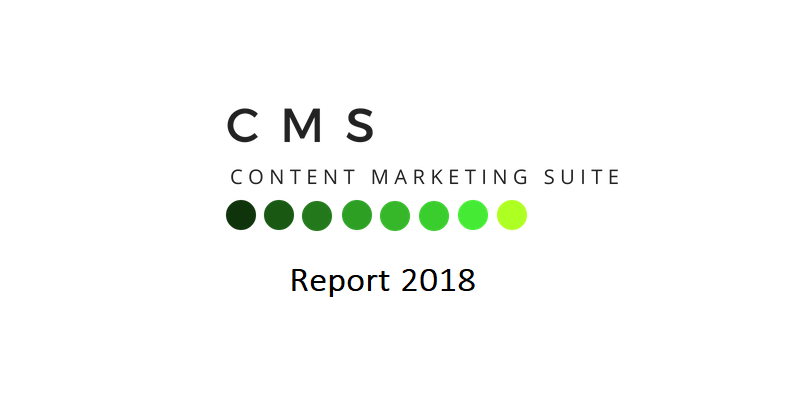Report 2018 ContentMarketingSuite: Contents quality and length for SEO

How the quality and length of articles, guides, and product descriptions changes based on The Google algorithm updates .
Year’s end is the best time to take stock. CMS has decided to start taking stock of the content we produced in 2018, and try to analyze the production trends over the last 3 years. Thanks to our privileged position, we have attempted to reconcile the typology and structure of the content produced for our clients with the Google algorithm updates. The findings clearly show that apart from news stories, trends and in-depth pieces, content planning is increasingly a product of human intelligence and artificial intelligence.
The two main factors that we have taken into account for textual content are length and quality. Between 2016 and 2018 there has been a sharp increase in the average word count that the writers at Melascrivi receive per commission. Alongside this, we have also recorded a gradual increase in requests for specific types of articles. br /> Pillar-type articles and in-depth pieces have gradually taken over from clickbait and fillers designed to keep the site up to date or swiftly respond to Twitter trends and hype.
To get a clearer picture of this, let’s go over the most significant updates of the Google algorithm to try and reconcile them with the content trends.

- 2011 Panda: penalizes sites with poor content quality (e.g stale and standard, and sites updated infrequently)
- 2012 Penguin: follows Panda’s lead and seems to want to avoid overused SEO techniques
- 2013 Hummingbird: Google starts to understand what the user is looking for and raises teh bar higher (from the words to the purpose of the search)
- 2014 Pigeon: location is prioritized in the search results
- 2017 Fred : have cracked down yet again on content that isn’t very useful, if not outright fake.
- 2018 Medical update (August): only authoritative sources on a given topic are considered
- 2018 Medical update (September): partial rollback and traffic recovered from sites which were wrongfully penalized.
First of all, Google requested we produce quality content at a high frequency to then hone in on the concept with successive updates.
We’re talking about well-written articles and content of 300 words and under, produced quickly in order to publish new content every day.
However, in 2013 and then in 2017 , Google’s AI began to understand the content’s meaning better, and started to privilege more complex and articulate texts: the famous Pillar.
The Medical Update (renamed to reflect its strong impact on the whole paramedical sector, and some of the food sector.) has not only added length, but also extra pressure on the content producer (AI finished what Google+ had begun in that sense). What have marketers and seo managers done over the years to match Google blow for blow? The ones managing our marketplace have made radical changes to both the structure and the average quality of the content commissioned.
First of all, we have seen a 10% increase in the number of content pieces assigned to , and written by specific writers.. The need for the precisely-timed publication of high quality content, has driven us to rely increasingly on trusted writers who are already known to us.
However, the defining parameter of the last 3 years has been the average length of the content.
Already in 2017, there had been a leap of 20% in the average word count per article ,but the figures between 2018 and 2016 are telling: + 45%.
In 2018, production has been largely driven by the Local sector. Real efforts to give greater visibility to small and medium-sized businesses on search engines,have incrementally increased the volume and length of the articles commissioned.
This phenomenon has made Content Marketing a more important topic compared to when the average Italian entrepreneur designed their site around 4 basic pages : Home, About Us, Services, How To Find Us.

We have noticed the opposite trend in Ecommerce.
The average length of product descriptions produced by Melascrivi in 2018 has remained under 250 words, and fallen by 6% year after year. And the figure grows compared to 2016. br /> Quality and engagement in the era of mobile first.
Visitors, including a huge portion of conversions, come via smartphone browsing, which is by definition quick and often distracted.
This trend leads us to suppose that the product descriptions are therefore condensed in order to catch the user’s attention with a smaller number of words.
Selecting writers who are capable of producing that kind of description becomes a key a part of our strategy.
.jpg?1547225484126)
And what about Seo? ....
The quality of the descriptions, however more succicnt , guarantees a good user experience, which is a key element for Google.
2018 also strengthened the trend for the production of descriptive texts for categories and branded pages.
Main objective: position the listing to then give access to a wider range of products.
According to our data, 2018 has confirmed that Content Planning and Google Updates go hand in hand.
Trends may still change in 2019.
Vocal controls, Product Videos, Seo on Amazon...
Our Content Marketing Suite is ready. Are you?


.jpeg)


